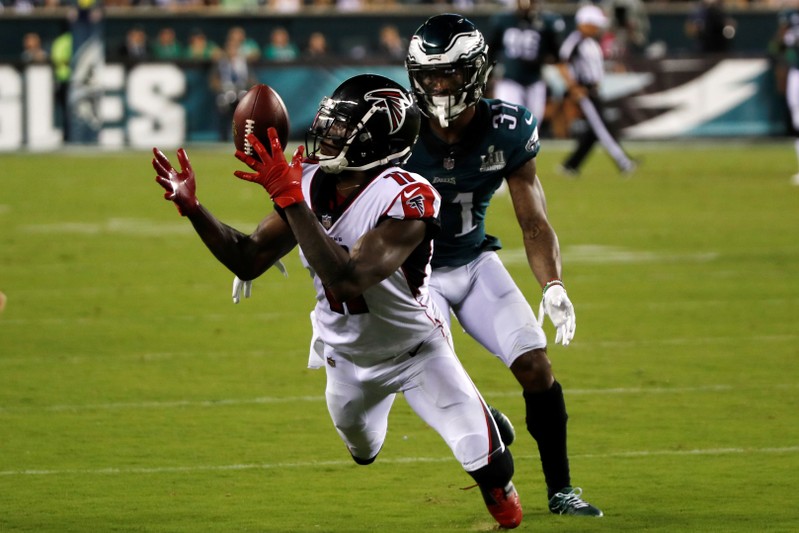
The fashion industry is currently swept up in a storm of nostalgia. While mom jeans, platform sneakers and other ’90s trends used to be considered outdated, now they are all the rage.
Riding on this throwback wave, Italian heritage brand Fila and American sweatshirt producer Champion are enjoying another lease of life.
Fila’s signature red, blue and white color palette and Champion’s embroidered “C” — both of which have been around for a century — have garnered attention as the demand for nostalgic, iconic designs rapidly rise.
“The 90’s retro trend is very hot right now and Fila and Champion are at the center of it,” said Matt Powell, a senior sports industry analyst at the New York-based research firm NPD Group.
From 2016 to 2018 alone, Fila’s sales increased 205% from 967 billion Korean won (U.S. $821 million) to 2954 billion Korean won (U.S. $2.51 billion). Fila Korea became the brand’s global headquarters in 2007 after acquiring the rights to Fila’s global subsidiary company, Sports Brands International, along with the entire global business.
Champion’s 2018 sales excluding the U.S. mass channel amounted to $1.36 billion, up from approximately $1 billion in 2017. The CEO of Champion’s parent company, Hanesbrands, also recognized the sports brand as a “growth initiative” which delivered “stronger than expected” results in its 2018 fourth-quarter earnings call.
Compared to main industry players such as Nike and Adidas, the two are smaller, unique brands — which are winning right now and growing faster than the industry, Powell told CNBC.
“The younger consumer wants to wear unique products, made by unique brands and sold in unique retailers,” he added.
Focus on heritage
Instead of accommodating the rapid turnaround of trends in the market, Champion and Fila have leveraged on the ongoing 90s obsession and refined their brand strategy to focus on their century-long heritage.
For Champion, that involved looking deep within its archive and picking out classic, iconic styles, like its best-selling Reverse Weave sweatshirts, then revamping them for today’s consumer, said Susan Hennike, the president of Champion North America.
“To address our consumers’ desire for new features, style and fabrications, we played with various graphic prints, dyes and colors, in an effort to update them in a modern way that is still true to the brand,” she told CNBC.
A guest wears orange socks with Japanese prints, Fila white sneakers shoes, during London Fashion Week Men’s January 2018 in London, England.
Edward Berthelot | Getty Images
Similarly, a spokesperson for Fila Korea attributed the company’s success to the reinterpretation of its brand history and heritage.
Leading the brand’s revival is Fila’s Disruptor 2 — an updated version of the original sawtooth sneaker released in 1996 — which was named “Shoe of the Year” in 2018 by Footwear News.
The new sneaker incorporates a modern twist by offering metallic and pastel options to cater to contemporary consumers, the spokesperson told CNBC.
Fila’s behemoth platform sneakers and Champion’s reverse weave sweatshirts are “instantly recognizable, backed by social media influencers and throwback to ’90s trends,” said Kayla Marci, a market analyst at London-based retail analytics firm Edited.
Streetwear hype
The rise of streetwear — defined by the Oxford Dictionary as a casual style of clothing worn by members of various youth subcultures — plays a crucial role in the turnover of these brands, Marci told CNBC.
Streetwear is now valued upwards of $100 billion, and almost 71% of millennials and 74% of Gen Z consumers wear the style some or all the time, according to London-based consultancy firm PwC’s 2018 Holiday Outlook Report.
The two sports brands have partnered with noteworthy streetwear brands — Champion with Supreme and Off-White, and Fila with BAPE.
Those collaborations have helped them create exposure to a different audience and provide greater reach into the lucrative streetwear market, Marci said.
“This tactic gives the Gen-Z streetwear customer opportunity to buy into these high-end labels. In turn, this optimizes the ‘fashion cred’ of the heritage brand,” she added. “Trends inspired by street style and nostalgia will continue their longevity as logos and branding appear as a key theme on the runway.”
Will it last?
Currently, Fila operates in more than 70 countries worldwide with 37 licensees. Champion, on the other hand, has over 150 stores globally, with the majority of them located in Europe.
To sustain their boom in popularity and compete with major sportswear players, Fila and Champion need to keep their ear to the ground to the consumer’s changing needs and environments, and remain technologically savvy, Marci told CNBC.
“Both of these brands have a rich history and a broad customer base. However, they need to retain both to stay relevant. While retro trends may have appeal now, it’s essential for brands to continue to move with the times and continue to innovate as consumer tastes change,” she added.

